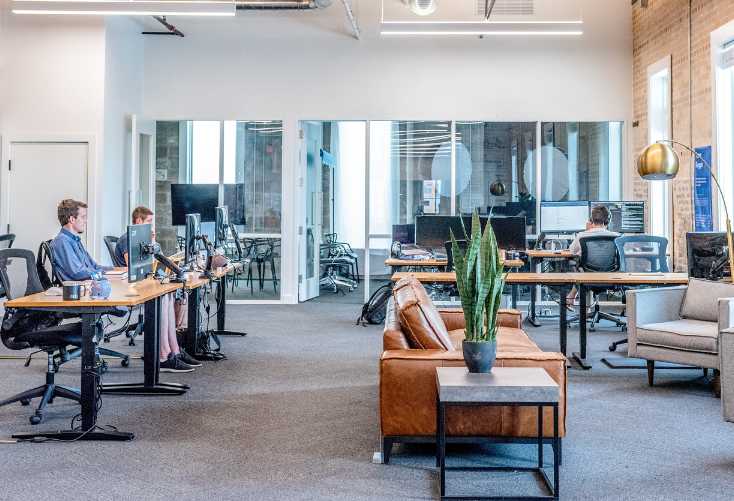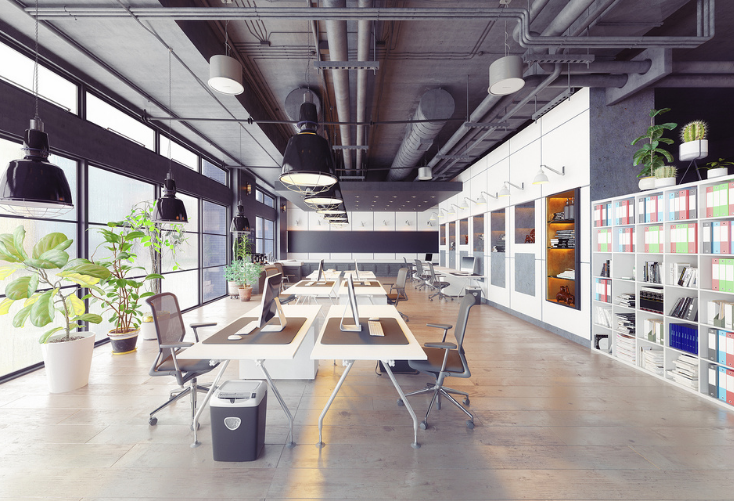Hand selected flexible workspace news from the most reliable sources to keep you ahead of the pack. We find all the latest news, so you don’t have to. Morning and afternoon updates. Stay in the know.
- Creating A Truly Beneficial Wellness Program NEW
- What To Expect From Workplaces Of The Future NEW
- Reskilling The Workforce Goes Beyond Technology NEW
- How Remote And In-office Working Can Coexist
- Permanent Changes Are Coming To The Workplace
- Coworking Firms Could Come Out On Top
Creating A Truly Beneficial Wellness Program
Company wellness programs have been around for decades in hopes of ensuring that employees are healthy at home and work. While on the surface these programs want to encourage workers to be their best, monitoring what they do off the clock is suspicious at the least. Even startup culture, which usually consists of in-office fitness classes or chef-prepared meals, can feel like a ploy to get employees to stay at work longer.
Now that many workers have been forced to conduct their business at home, making sure they are practicing healthy habits means more than having a salad for lunch.
A 2015 study on workplace health and well-being found that “lack of sleep, financial concerns, and giving unpaid care to family members or relatives” were the true culprits of daily stress.
So how can a company ensure that their employees are taken care of on a deeper level? For starters, offering basic health insurance can alleviate some of these common life stressors.
Business leaders should also encourage workers to enjoy their own hobbies and passions without guilt. For instance, software company Scality has started giving employees more time and money to use towards creative outlets apart from work. This money can go towards home exercise equipment, musical instruments, video games, home improvement projects and more.
Additionally, leaders should discourage working around-the-clock and allow them to take time for themselves. While remote working has been beneficial in many ways, employees have expressed the issue of being “on” at all times.

What To Expect From Workplaces Of The Future
It is safe to say that companies who have had to transition to remote working have been able to identify the pros and cons of this work arrangement by now. While many have proclaimed that this is the end of the office, that may not be the case as research has indicated employees prefer a hybrid work model. Still, changes to the physical workplace are inevitable as business leaders work to create a space that is safe for their workers.
“Going beyond building systems, health and wellness programs could be amenity-driven, focusing on how buildings use outside space, for example,” said John Duda, president of real estate management services at Colliers Canada. “Case in point: Colliers Canada’s Real Estate Management Services Team, in partnership with building owner Desjardins Life Assurance Company, put in a street-level urban garden at 95 St. Clair in Toronto, spanning the building’s entrance all the way onto the street.”
Along with the implementation of wellness amenities in the workplace, companies will also up their hygienic and sanitation practices. This means an increase in cleaning surfaces, installing touchless technology and offering more sanitation stations around the office.
According to Colliers Canada’s Work from Home Survey, 60% of respondents said focused work was better done at home. On the other hand, collaborative work has been proven to be more difficult when done virtually. Knowing this, we can expect companies to provide a larger variety of work options for employees, such as private booths for individual work and collaborative spaces that provide the ability to broadcast to those who are still working from home.

Reskilling The Workforce Goes Beyond Technology
Business leaders have realized the importance of upskilling their employees, but what does that truly mean? On the surface, it could refer to training them to become more fluent in certain technologies, but soft skills may be just as important.
Automation has played a key role in transforming the workforce over the past several years. Along with automated integration has been a fear that technology would be taking over jobs. However, that has not happened. Instead, workers have learned to work alongside this technology and learn new skills in the process.
This is happening even more so today, with automation taking over menial tasks and allowing humans to adapt and focus on more complicated work. The importance of the human touch is synonymous with soft skills. Things like creativity, emotional intelligence and leadership cannot be replicated by automation.
A LinkedIn survey found that the most essential skills workers need in 2020 were leadership, management, creative problem solving and communication. This is particularly challenging as employees are now forced to hone these skills while working remotely. Now, workers must navigate how to effectively communicate with colleagues outside of the office, sometimes even in different time zones.

How Remote And In-office Working Can Coexist
Despite millions of businesses making drastic changes to their normal operations, a new JLL report indicates that the permanent solution will not be remote working.
Instead, companies will likely turn to a more hybrid approach that offers both in-office and remote working arrangements. The report indicates if businesses take the perks of each of these work models, the future of the workplace could thrive more than ever.
According to the report, there are four strategies that organizations should use when deciding the best work arrangement for their employees: one size does not fill all; adopting a hybrid model; building a flexible work environment with one community; and responsible enterprise.
The no one-size-fits-all approach allows companies to have a better understanding of how their employees work. While some may do their best work in the comfort of their homes, others may thrive in a more collaborative office environment.
The hybrid model can serve a company in multiple ways by providing workers with more workplace options. However, this does not necessarily mean a company’s real estate footprint will decline. In fact, businesses will more likely redistribute their footprint through the use of home offices, satellite offices, coworking spaces and others.
Creating an elastic workplace, but one community will require organizations to reconfigure the workplace experience in order to make it more fluid. This means managers will need to take on a new role of coaching their employees through this transition, while creating meaningful connections between workers.

Permanent Changes Are Coming To The Workplace
The evolution of the workplace over the past several months has prompted companies to reconfigure their offices in order to accommodate the changing needs of professionals. For instance, coworking provider WeWork has been adjusting their normal model to create a more secure workplace.
Ronen Journo, senior vice president of enterprise and workplace for WeWork, addressed the changes the company has been making to create a safer place for their members.
“In all of our locations, we’ve de-densified high traffic areas and modified shared spaces. We also built upon our existing cleaning measures to frequently disinfect common areas and lounges and added sanitization stations throughout our locations,” said Journo. “We’re asking that people wear masks in common areas, ensuring that hand sanitizer is available, and where possible, taking people’s temperatures.”
Additionally, Journo believes that these changes will be more than just temporary solutions. In fact, many business leaders will see this as an opportunity to cut costs, while integrating new technology that can better support remote workers.
This will likely lead to more companies adopting flexible work arrangements, including how, when and where they work. Workers will be given more freedom to choose their work schedule, while companies can let go of additional office space that is underutilized.
Doing so will also build a better sense of trust between managers and employees. Prior to the transition to a more remote workforce, many business leaders relied on presenteeism to determine whether workers are being productive. However, research has found that this micromanaging tactic can hinder how efficient workers are.

Coworking Firms Could Come Out On Top
Despite the coworking industry taking a major economic hit caused by the ongoing pandemic, those who survive could emerge stronger than ever.
Due to their short-term nature, coworking spaces have been at higher risk of business loss than office landlords with long-term leases.
Prior to the pandemic, issues with WeWork and a few other notable coworking companies left the commercial real estate world wondering whether this industry was sustainable. With small businesses also suffering from the economic blow, coworking spaces have become that much more vulnerable.
Now, operators have started shifting their services to accommodate enterprise clients to bring in more revenue. Large companies that are in the process of downsizing their main offices or navigating how to accommodate remote workers are opting for coworking spaces with flexible leases.
In the future, it is clear that employees will continue wanting flexibility in the workplace, opening up a world of possibilities for the industry. However, along with this growth in demand, there will need to be a change in the dense, close-knit nature of coworking spaces. These workspaces will have to become more health-conscious by upping distancing measures, decreasing their occupancy and increasing sanitation practices.
“We anticipate this to be a longer-term trend where businesses just require more flexibility,” said Philippe Houdard, CEO and co-founder of boutique coworking group Pipeline. “For any company whose lease is coming to an end in a standard building and there’s an expectation of a five-year renewal, they are less likely to do it.”



 Dr. Gleb Tsipursky – The Office Whisperer
Dr. Gleb Tsipursky – The Office Whisperer Nirit Cohen – WorkFutures
Nirit Cohen – WorkFutures Angela Howard – Culture Expert
Angela Howard – Culture Expert Drew Jones – Design & Innovation
Drew Jones – Design & Innovation Jonathan Price – CRE & Flex Expert
Jonathan Price – CRE & Flex Expert













